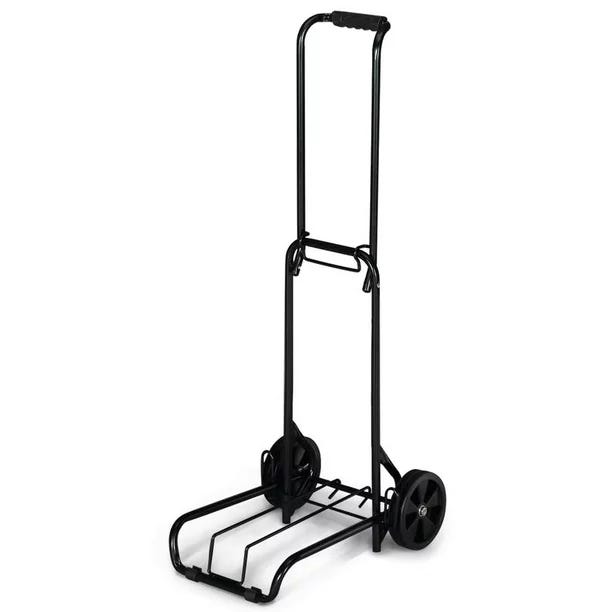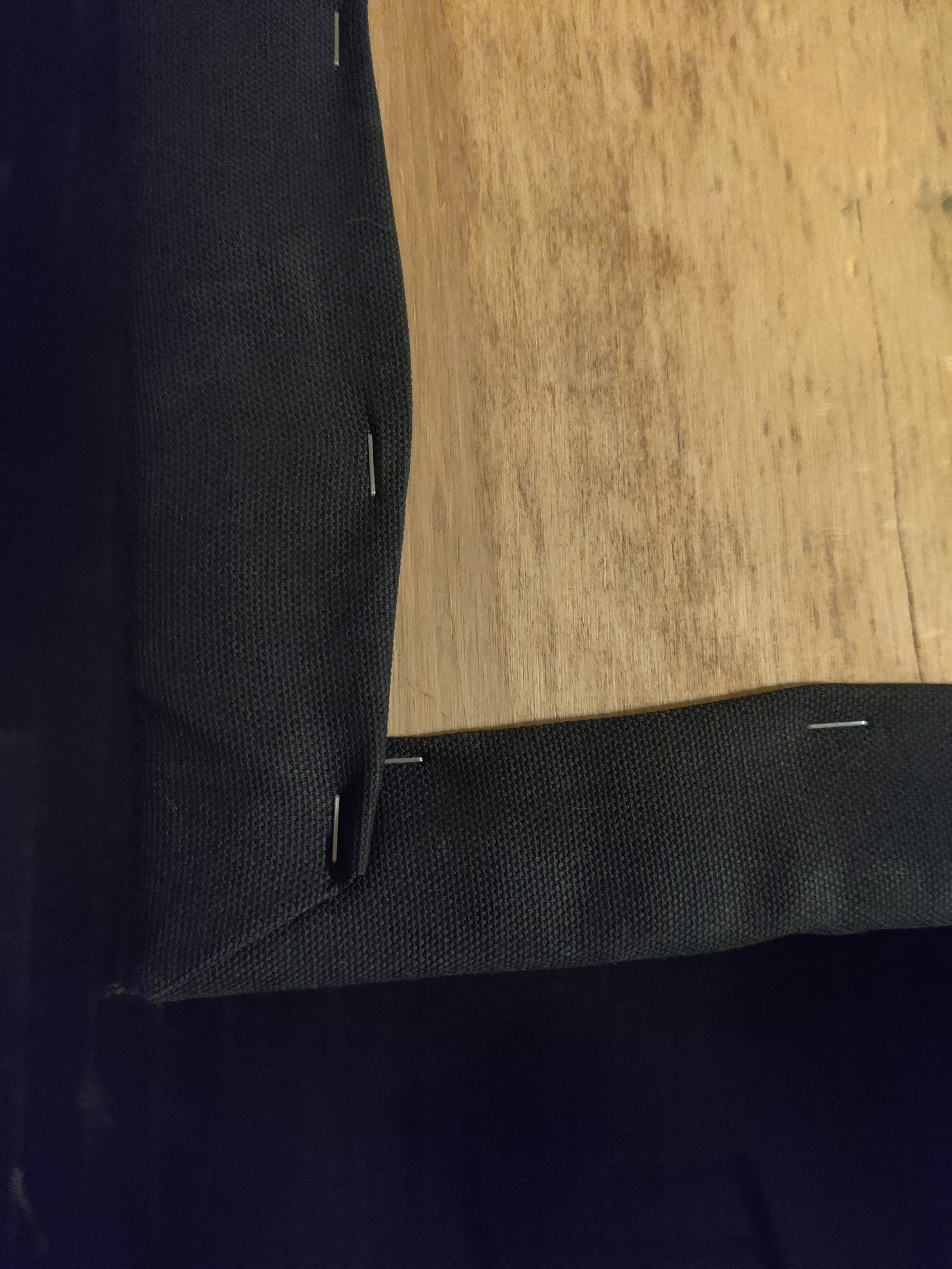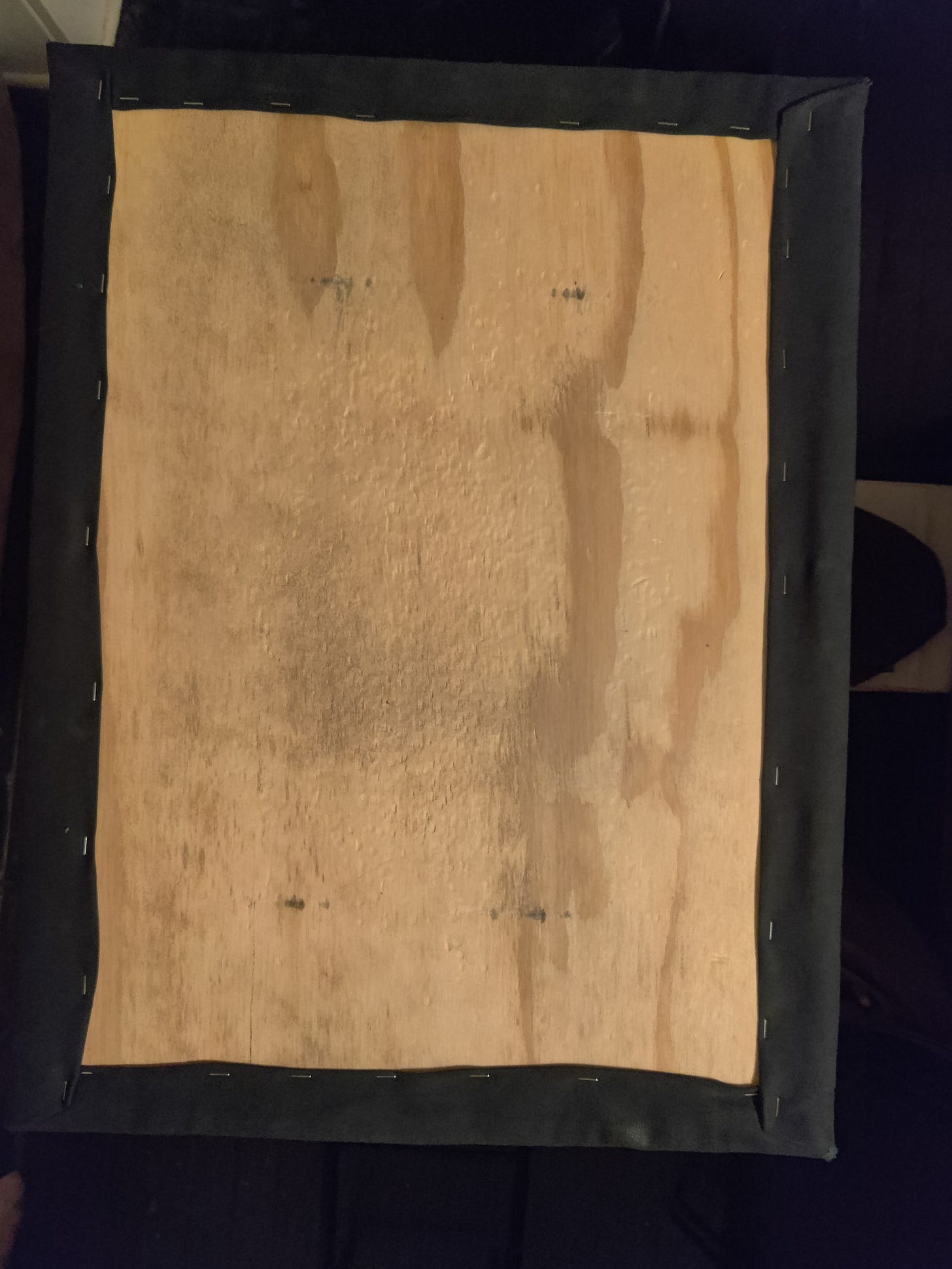On the sidewalk, behind that table, I'm in my office.
If one does cups and balls, or card magic, the table is arguably the best presentation for these fine traditions.
We see in many ancient images, woodcuts, and even The Tarot, The Street Magician, depicted with his table.
The Table hides the arsenal in plain sight, the moves, the hold outs, the gimmicks, the sneak. And all the while, suggesting a port and credibility to the passerby.
Without the table, the operator must increase his showmanship, but a magician with both, can be a force to be reckoned with.
The Street Magician's Table.
There are several types of Magic Tables, mostly made for indoor work.
Most are too heavy and cumbersome to pack and travel. Some are too small, or unstable, and cause problems while we work. This is fatal to the sidewalk performer.
But there is one table that cures most of these woes.
The Tray Jack Table.
The Tray Jack Table.
This has been the Standard for eons.
The complete Rig, is made up of a tray jack stand, a table top, a bag, a sign, and a dolly. This Rig can be made DIY, or purchased from the professionals who make Pro Rigs. I make my own, and buy stuff from non-magic businesses, because my work on the road and lifestyle demands it.
The Complete DIY Rig, runs about $30-$50
The Complete Professionally Built Rig, runs about $300-$2500
Here's a breakdown of the Rig:
The Tray Jack Stand: This is a portable Stand that opens up, so a waiter can set trays on it to serve the customer. It is built for weight and stability. This can be purchased at any restaurant supply house, they're cheap and well made.
The Table Top: This is an upholstered board, that lays on top of the stand. Creating a table. If you can afford it, you can buy a beautiful one, from the pros who make Rigs.
Most of us just make our own. Don't be intimidated by this DIY, I will give a simple detailed instruction on how to make one, at the end of this article.
The Bag: This is a bag that hangs over the Stand, in back of the table, away from the audience, for the operator to work out of. This can be used as a servant, dropper, or storage.
I have found the shoulder bag works best for what I do. One could use a back pack, but it can be cumbersome to the table top, which has to sit on the bag straps.
The size of the shoulder bag really depends on the needs of the operator, mine can hold cups, cards, coins, water, rope, wands, horn, and various other things.
Strap length is important for hanging. One should try and make it as short as possible to keep the mouth close to the end of the table. One may have to double wrap it. Shoulder Bags can be found at department stores, but I usually get mine at thrift stores for a couple of dollars.
The Dolly: This is the thing that wheels your stuff around. You fold your stuff up and strap it with Bungee cord to the dolly and away you go! I use a fold-able portable luggage carrier, from Walmart or thrift stores.
The Sign: The sign attracts people and makes the whole rig look like something familiar to the Passerby. I use a fold-able box, with a sign on it that says MAGIC SHOW, and on the back, has my information to receive electronic tips. I find these boxes at the dollar store, thrift stores, or in the laundry section of department stores.
Table Top Construction.
You will need; A Staple-gun, Plywood, a bath towel, and Duck material.
The 1/2" plywood is cut at the hardware store: 24" x 18"
Cut with the grain long ways for strength, and to fight the subtle natural bowing. The top of the table will be the top of the bow, so that it is always being pushed down over the years when working.
If you mess this up don't worry about it, it's not that big a deal.
The thickness, should be 3/8" or 1/2" This is important for weight.
The table Top when finished, stays on top of the tray jack stand by gravity, going too thin will make the table top too light, and cause it to blow off the tray jack stand in the wind. Going too thick means carrying extra weight that is unnecessary.
A Bath Towel: This will act as a cushion under the Duck Material for a better work surface. It should be cut to fit around the top and just around the edges of the bottom and pulled tight and smooth, then stapled around the bottom. When you've done this, it will leave a huge rectangle of bare wood visible on the table bottom.
NOTE: One could use thin foam rubber for this, I prefer the towel, it holds up better over time in the weather.
Duck Material: Usually black or dark green, cut to length, long enough to wrap around the table and cover the towel edge on the bottom of the board.
It should also be long enough to be folded over into a thin fold on the bottom of all sides, and stapled. This thin fold stapled on the bottom will prevent fray.
When finished, it should look like this on the bottom.
My table, is just the standard table, In fact some guys, on the fly, just grab a board, and stick the cloth with glue or duct tape.
Some like to take the time and effort to make them really really nice.
Eric Evans in his book, The Secret Art Of Magic, suggests using lamb's wool instead of a towel, and wrapping it with leather instead of Duck Material. He’s a genius and a good man. If you’re not familiar with him, or his work, you need to be.
Here is a video tour of my rig, that better explains what’s going on here.
If you liked this article, and you want to help me and the family out, you can leave me a tip HERE.







I really liked your information. There is only (for me one consideration)….i see that most street tables are far to low for comfortable working. A good street table 40 inches (1 Meter) high. If you look at the streetdrawings of past ages you will see those tables in France a lot. They used higher tables for a good reason! Nowadays most streetmagicians have to bow to pick thing up from their table. I think (but who am I) its far more elegant to stand up right and pick things from the table. ( a suggestion by Bob Read who told me this when I was young!) A further advantage is the distance between the table top and your pockets or pouch for loading actions, adding less movement and easier loading actions. Anyway just my personal feelings because I’m used to higher tables since 1980 when starting the word the streets in the Netherlands. John Anders
This information is very helpful, Jimmy. Building a close-up table for street magic is on my do-to list. Adding a hook to the stand is a great idea; I will add that to my design.
The only thing this rig doesn't provide is a double-sided tabletop. I need a padded surface for card magic and a flat, smooth side for dice stacking. Attaching a thin piece of laminate to the underside of the board should do the trick.